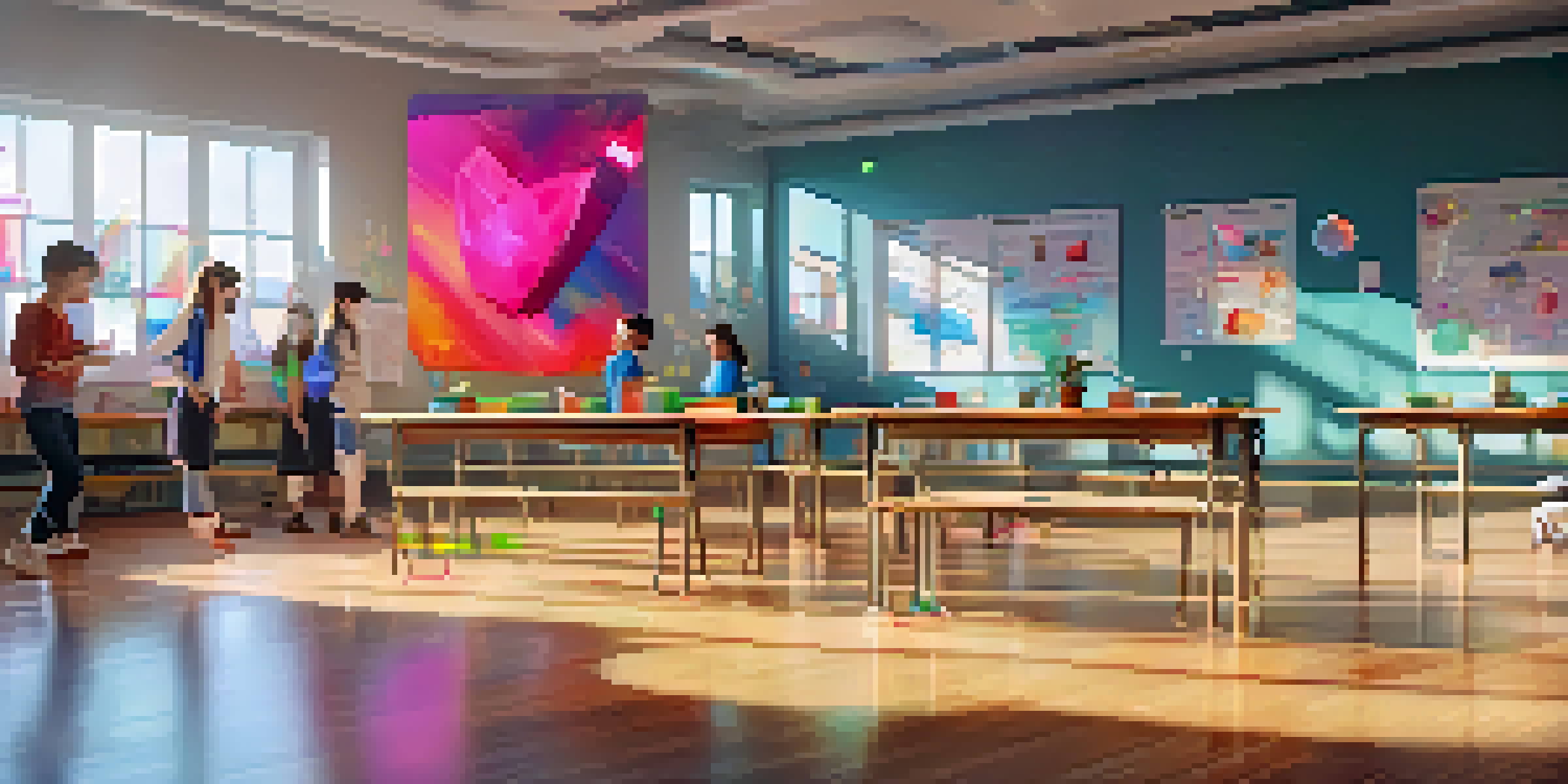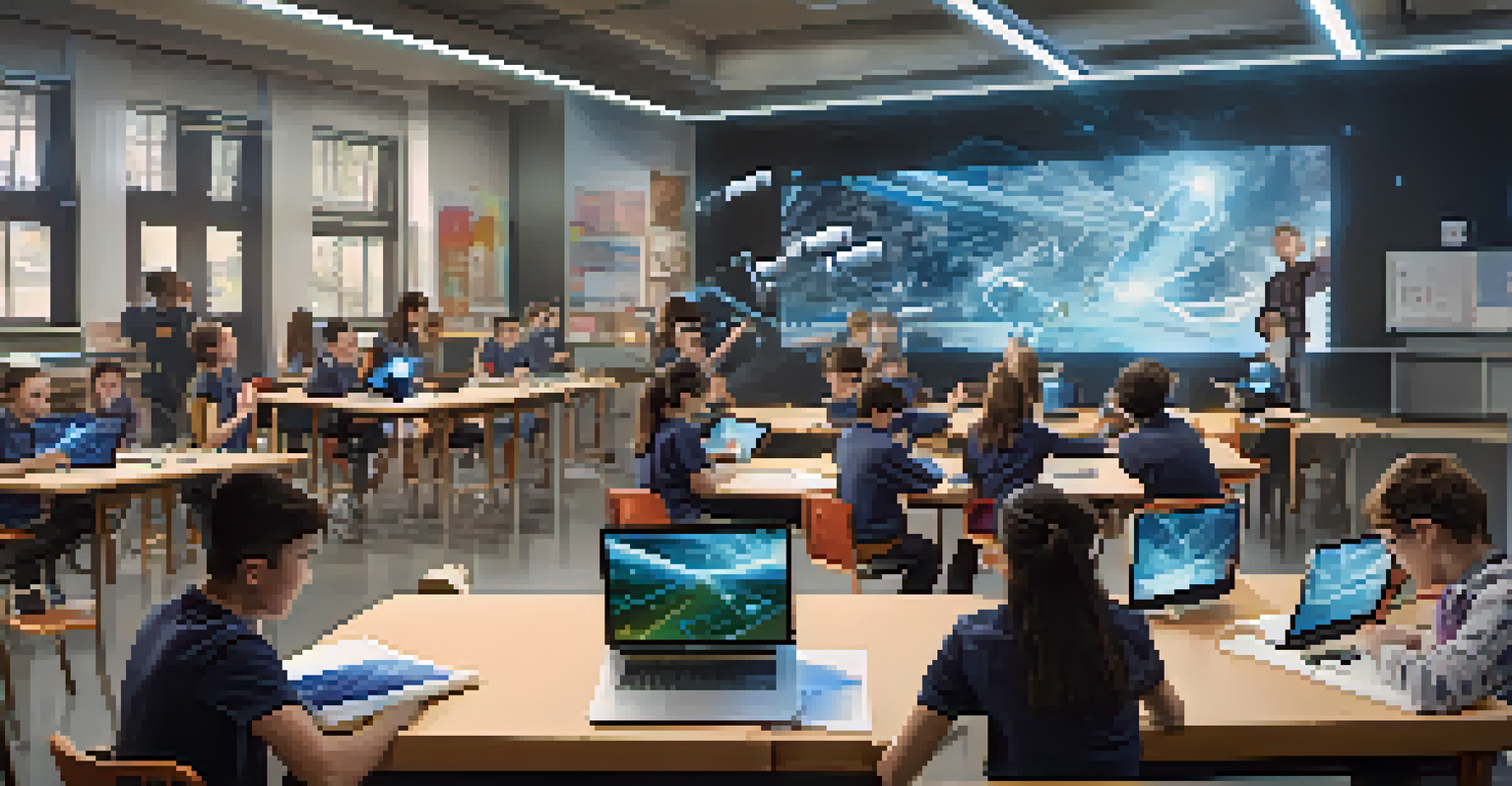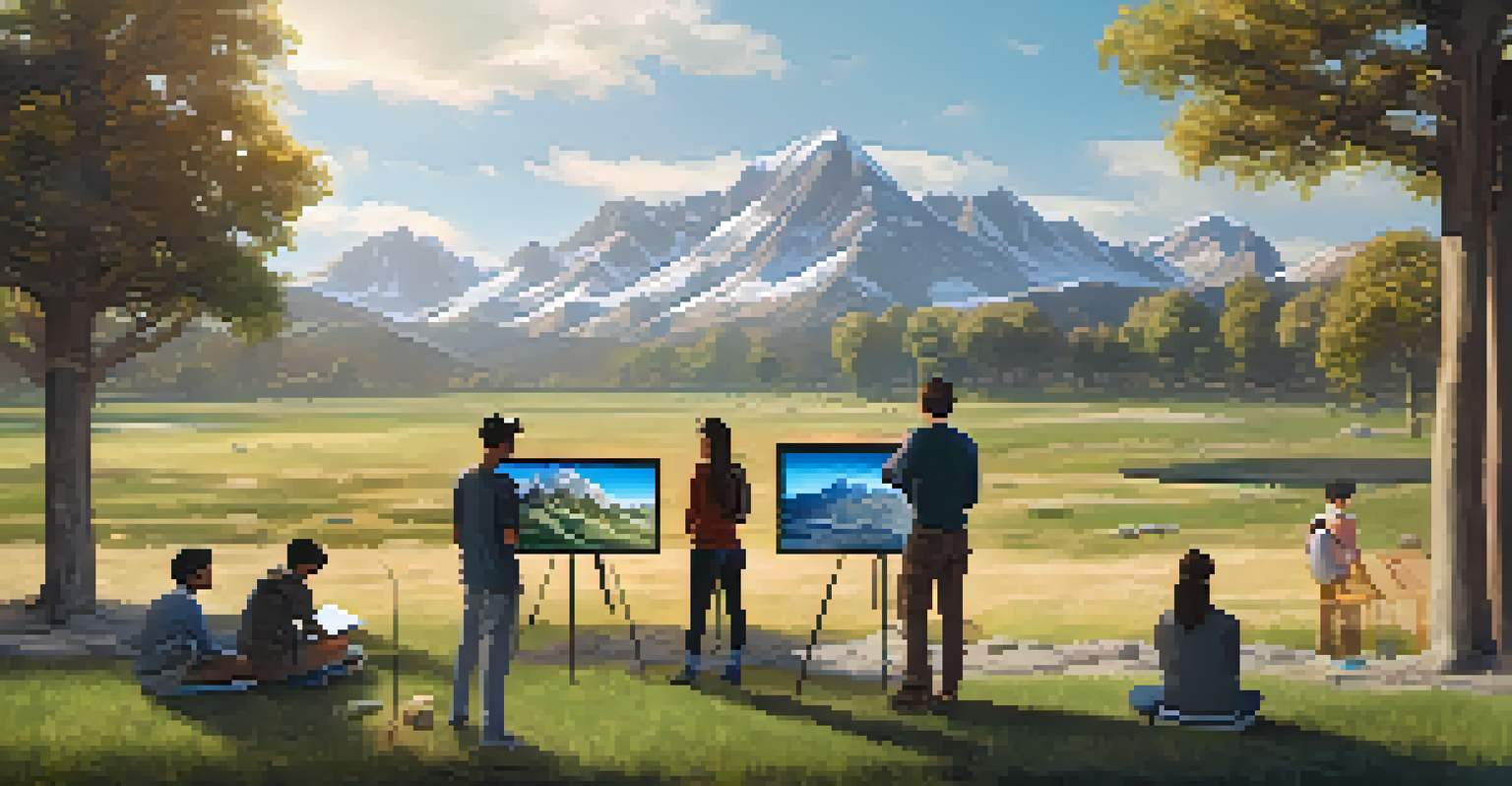How AR Technology Transforms STEM Education

Understanding AR Technology in Education
Augmented Reality (AR) technology superimposes digital information onto the real world, creating an interactive experience. In education, this means students can engage with 3D models, simulations, and visualizations that enhance their learning. Imagine a biology class where students can see a 3D heart beating right in front of them, making complex concepts more tangible and easier to grasp.
Augmented reality has the potential to change the way we learn by creating immersive environments that engage students and enhance understanding.
This technology offers a unique blend of physical and digital elements, allowing learners to manipulate and interact with content. For example, a chemistry student might virtually mix compounds and see the reactions in real-time without the risk of spills or accidents. Such immersive experiences not only boost comprehension but also spark curiosity.
AR also caters to different learning styles, ensuring that visual, auditory, and kinesthetic learners can benefit. By providing diverse ways to explore subjects, AR fosters a more inclusive educational environment where every student can thrive. As a result, educators are finding innovative ways to integrate AR into their lesson plans.
Enhancing Engagement in STEM Learning
One of the most significant advantages of AR in STEM education is its ability to engage students actively. Traditional learning methods can sometimes feel monotonous, but AR brings subjects to life, capturing students’ attention. Picture a physics lesson where students use AR to visualize forces and motion in action—this kind of engagement makes learning exciting and memorable.

Moreover, AR enables collaborative learning experiences, allowing students to work together on projects in virtual environments. For instance, they can design structures or solve engineering problems as a team, fostering communication and teamwork skills essential for future careers. This collaboration can lead to richer discussions and deeper understanding of the material.
AR Enhances STEM Learning Engagement
Augmented Reality transforms traditional STEM education by actively engaging students through interactive and immersive experiences.
Additionally, the interactive nature of AR encourages students to take control of their learning. They can explore topics at their own pace, revisiting complex concepts as needed. This autonomy not only boosts confidence but also cultivates a lifelong love for learning, which is crucial in a rapidly evolving world.
Making Complex Concepts Accessible
STEM subjects often involve complex theories and abstract ideas that can be difficult for students to visualize. AR technology bridges this gap by providing concrete representations of these concepts. For instance, students can explore the structure of a cell in 3D, rather than relying solely on flat diagrams in textbooks, making the information easier to understand.
Technology will not replace great teachers, but technology in the hands of great teachers can be transformational.
This accessibility is particularly beneficial for students who struggle with traditional learning methods. By allowing them to interact with the material in a hands-on way, AR can help demystify challenging topics. Imagine a math lesson where students can manipulate shapes and see geometric properties in action; this kind of visualization can lead to greater comprehension.
Furthermore, AR can cater to various educational levels, from elementary to higher education. As students progress, they can encounter increasingly complex AR applications that challenge their thinking and expand their understanding. This adaptability ensures that AR remains a valuable tool throughout a student's educational journey.
Fostering Creativity and Innovation
AR technology not only enhances understanding but also nurtures creativity and innovation in STEM education. Students can use AR to design projects, experiment with ideas, and visualize their concepts in a way that traditional methods may not allow. For example, budding engineers can create prototypes and see how their designs perform under various conditions without needing physical materials.
This freedom to explore and create encourages students to think outside the box and develop problem-solving skills. They can iterate on their designs, making adjustments in real-time based on what they observe through AR. Such hands-on experience is invaluable, as it mirrors the creative processes used in real-world STEM fields.
Bridging Theory and Practical Skills
AR technology connects theoretical knowledge with real-world applications, enabling students to visualize concepts in practical scenarios.
The ability to experiment safely and freely also builds resilience; students learn that failure is a part of the innovation process. By fostering a growth mindset, AR helps students become more adaptable and open-minded, traits that are essential in today’s fast-paced world.
Bridging the Gap Between Theory and Practice
One of the challenges in STEM education is bridging the gap between theoretical knowledge and practical application. AR technology provides a seamless way to connect the two. By allowing students to visualize and manipulate concepts in real-world scenarios, AR helps to reinforce what they learn in the classroom.
For instance, in a geology class, students can use AR to explore rock formations and understand geological processes without needing to be outdoors. This not only makes learning more relevant but also prepares students for real-world applications of their knowledge. They can see how theoretical principles apply to actual situations, enhancing retention and understanding.
Furthermore, AR can simulate complex environments, such as a laboratory or a manufacturing plant, where students can practice their skills in a risk-free setting. This practical exposure ensures that students are better prepared for internships and future careers, as they gain experience in a controlled, yet realistic context.
Supporting Diverse Learning Environments
AR technology is a game-changer when it comes to supporting diverse learning environments. It can be tailored to accommodate different learning styles, paces, and needs, ensuring that every student has the opportunity to succeed. This adaptability is particularly crucial in inclusive classrooms where students may have varying levels of ability and experience.
For example, a student with a visual impairment may benefit from AR applications that provide audio descriptions or tactile feedback. Similarly, English Language Learners can use AR to visualize vocabulary and context, making language acquisition more intuitive. This personalized approach helps to level the playing field and fosters a more equitable learning experience.
Supports Diverse Learning Needs
AR adapts to various learning styles and paces, ensuring that all students, including those with unique needs, can succeed in an inclusive environment.
Additionally, teachers can use AR to create customized lessons that cater to their students’ interests and strengths. By leveraging the technology’s flexibility, educators can engage students in ways that resonate with them personally, enhancing motivation and investment in their education.
The Future of AR in STEM Education
As AR technology continues to evolve, its potential in STEM education is limitless. With advancements in hardware and software, we can expect more sophisticated and user-friendly applications that enhance learning experiences even further. Imagine classrooms where students can explore the universe, walk on the moon, or dive into the ocean, all from their desks—this is the future of education.
Moreover, as educators become more adept at integrating AR into their teaching, the possibilities for innovation will only grow. We may see more interdisciplinary approaches, where subjects like art and science merge through AR applications, creating a holistic learning experience. This interdisciplinary focus can help students understand the interconnectedness of various fields.

Ultimately, the integration of AR in STEM education not only prepares students for future careers but also cultivates critical skills such as collaboration, creativity, and adaptability. As we embrace this technology, we are paving the way for a new generation of learners who are ready to tackle the challenges of tomorrow.